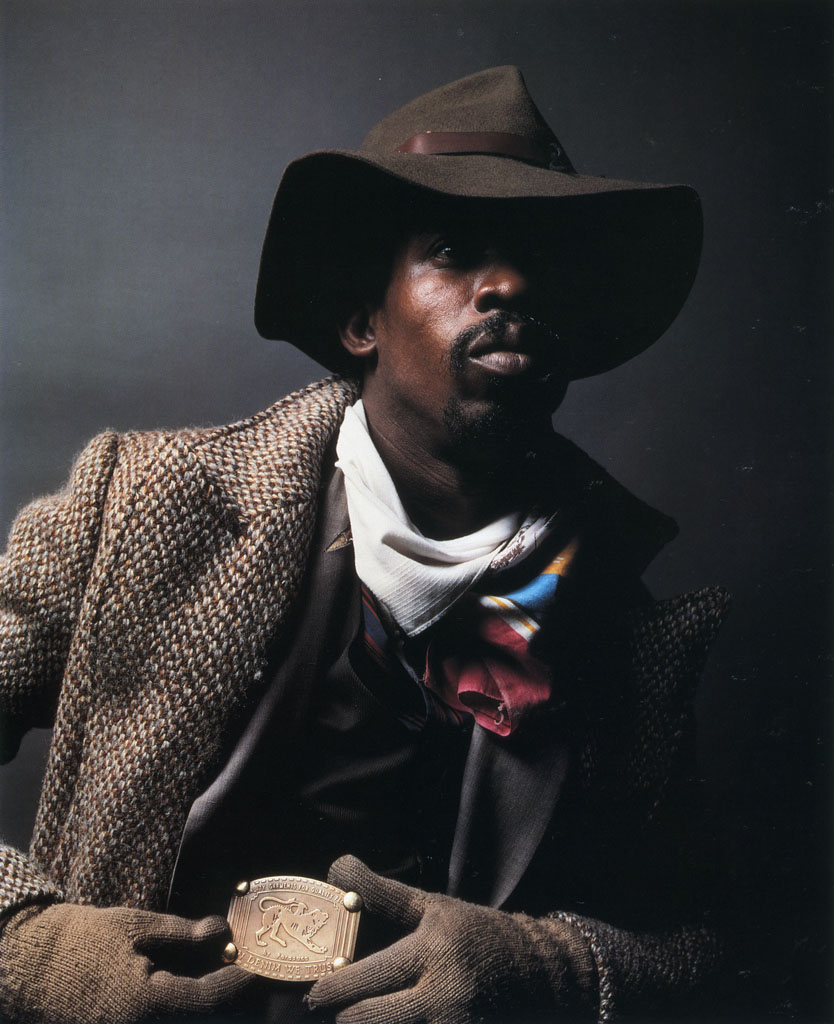This week, we celebrate our partnership with FotoDC by highlighting 6 photographs from our new installation, Shaping a Modern Identity: Portraits from the Joseph and Charlotte Lichtenberg Collection. Drawn from the wide-ranging collection of Joseph and Charlotte Lichtenberg, the exhibition presents sixteen photographic portraits by a diverse group of modern photographers, including Tina Barney, Chuck Close, Imogene Cunningham, Walker Evans, Andres Serrano, Edward Steichen, and Francesca Woodman, among others, along with an etching self-portrait by the legendary painter Lucien Freud. This installation explores depictions of the famous and the anonymous, which enlarge our understanding of how portraiture is an invention forged between the artist and his or her subject.
Shaping a Modern Identity will be on view through January 12, 2014.
To kick things off, we begin with an artist who is no stranger to controversy and the subject of much discussion: Andres Serrano.

Andres Serrano, Nomads (Sir Leonard), 1990, Cibachrome print. Joseph and Charlotte Lichtenberg Collection. © Andres Serrano
Serrano has always thought of himself as an artist using photography, and not as a photographer, the distinction being that he is not interested in documenting ‘reality’, but in creating his own. In 1990, Serrano turned to the genre of portraiture, creating several thematic bodies of work, each depicting various social groups. The first of these was a series called “Nomads”, studio-style photographs of homeless individuals whom Serrano found on the streets and subway tunnels, often photographing them on-site.
In Serrano’s portrait of Sir Leonard, a homeless man encountered in the New York subway, the sitter is monumentalized against a blank background, confronting the camera in a proud, almost defiant manner as he grasps his belt buckle. He appears at ease in front of the camera, which captures the shadows around his face, the different textures of his clothing, and the bright pop of color from his scarf. Without any context, Sir Leonard appears to have been dressed and carefully posed in front of the camera by Serrano. The artist, however, claims little control over the subject, explaining, “…I didn’t ask my sitters to look dignified or noble. The most I ever asked them was to look left or right. But I found that they gave me a very heroic response. I didn’t add anything to what they already possess. I just provided the lighting.”
What is so fascinating about this photograph and others in the series is that Serrano’s role as the artist is limited to finding the subjects and providing a background for the portraits. The magic of the photograph emanates from the sitters themselves—their dignity emerging from adversity. Serrano masterfully captures a group of people often overlooked in society and elevates their pride and personalities to high art. He creates a new reality for his sitters, giving them a platform to express themselves. Aside from the background and lighting, these “Nomads” are in charge of their self-presentation, and they demand a second look from their audience.

Pingback: Portrait Show Brings Photographer-Subject Encounters Into Focus | Pog Goblin
Pingback: SHAPING A MODERN IDENTITY PORTRAITS FROM THE JOSEPH AND CHARLOTTE LICHTENBERG COLLECTION | The Rōbert Report (pron: Rō'bear Re'por)
Pingback: Andres Serrano Wants New Yorkers To Stop Ignoring the Homeless